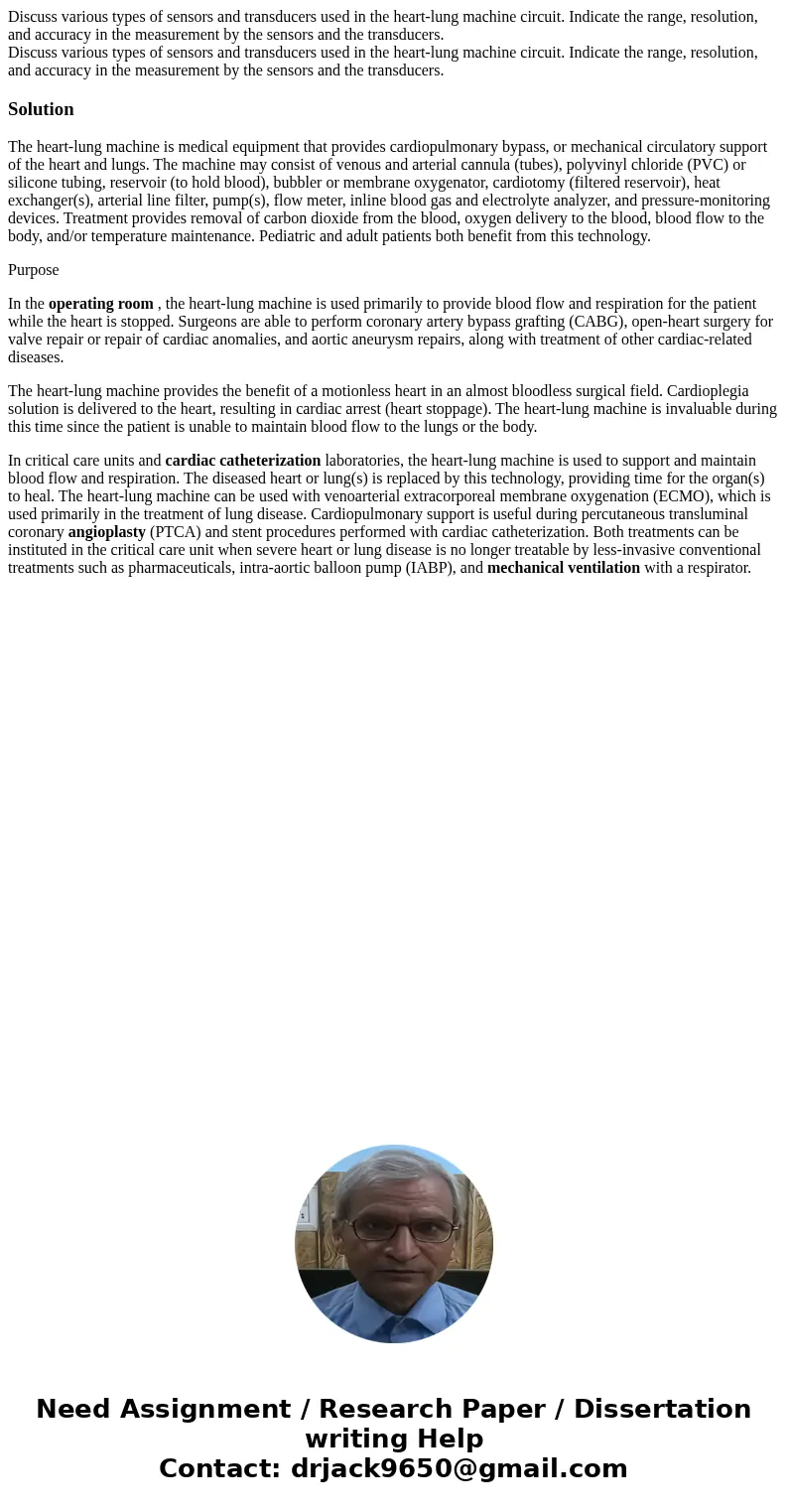Discuss various types of sensors and transducers used in the
Solution
The heart-lung machine is medical equipment that provides cardiopulmonary bypass, or mechanical circulatory support of the heart and lungs. The machine may consist of venous and arterial cannula (tubes), polyvinyl chloride (PVC) or silicone tubing, reservoir (to hold blood), bubbler or membrane oxygenator, cardiotomy (filtered reservoir), heat exchanger(s), arterial line filter, pump(s), flow meter, inline blood gas and electrolyte analyzer, and pressure-monitoring devices. Treatment provides removal of carbon dioxide from the blood, oxygen delivery to the blood, blood flow to the body, and/or temperature maintenance. Pediatric and adult patients both benefit from this technology.
Purpose
In the operating room , the heart-lung machine is used primarily to provide blood flow and respiration for the patient while the heart is stopped. Surgeons are able to perform coronary artery bypass grafting (CABG), open-heart surgery for valve repair or repair of cardiac anomalies, and aortic aneurysm repairs, along with treatment of other cardiac-related diseases.
The heart-lung machine provides the benefit of a motionless heart in an almost bloodless surgical field. Cardioplegia solution is delivered to the heart, resulting in cardiac arrest (heart stoppage). The heart-lung machine is invaluable during this time since the patient is unable to maintain blood flow to the lungs or the body.
In critical care units and cardiac catheterization laboratories, the heart-lung machine is used to support and maintain blood flow and respiration. The diseased heart or lung(s) is replaced by this technology, providing time for the organ(s) to heal. The heart-lung machine can be used with venoarterial extracorporeal membrane oxygenation (ECMO), which is used primarily in the treatment of lung disease. Cardiopulmonary support is useful during percutaneous transluminal coronary angioplasty (PTCA) and stent procedures performed with cardiac catheterization. Both treatments can be instituted in the critical care unit when severe heart or lung disease is no longer treatable by less-invasive conventional treatments such as pharmaceuticals, intra-aortic balloon pump (IABP), and mechanical ventilation with a respirator.

 Homework Sourse
Homework Sourse